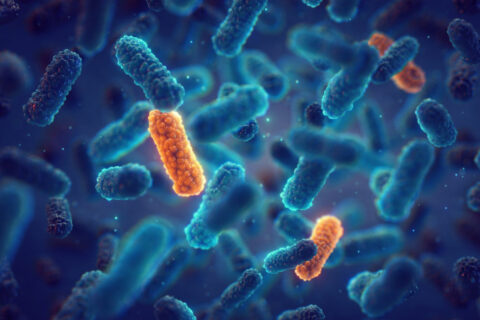Battling resistant germs
Computer Biology at FAU receives funding from Leibniz Association
Peptides, molecules that consist of up to 100 linked amino acids, may have an important role to play in the fight against multidrug-resistant germs. They affect the bacterias’ cell membrane, and can therefore improve the efficacy of antibiotics by allowing them to penetrate pathogens better. Researchers at FAU are carrying out research into these potentially beneficial properties together with working groups from Jena, Borstel and Hamburg. Their research is to receive a total of nearly one million euros in funding for the next three years from the Leibniz “Cooperative excellence” program, roughly 225,000 euros of which will be allocated to FAU. With the program, the Leibniz Association funds particularly innovative projects that require collaborative networking for their success.
Resistant germs are a serious problem in healthcare. According to estimates, in Germany alone up to 30,000 people develop an infection with multidrug-resistant germs every year, an infection which proves to be fatal for several thousands of them. On a global scale, this is the case for at least 1.2 million people. “Resistance can be caused by antibiotics, which generally work well, becoming unable to penetrate the pathogenic cell,” says Prof. Dr. Rainer Böckmann, who is the head of the Computational Biology working group at FAU. “This is due to changes in the composition and structure of the cell membranes.” Until now, there has been a lack of knowledge concerning how to improve the diffusion of antibiotics in the cells.
Together with research groups from the Leibniz Institute of Photonic Technology in Jena, the Leibniz Lung Center in Borstel and the Leibniz Institute of Virology in Hamburg, Rainer Böckmann intends investigating the synergetic effect of what are known as membrane-active peptides in combination with traditional antibiotics in more detail. An analytical platform is to be established for this purpose, allowing research to be conducted into the specific interactions between the peptides and bacterial membranes. Böckmann: “We use high-resolution microscopy, conduct electro-physiological and spectroscopic experiments and use computer-assisted models to decode these complex procedures.”
The Böckmann group, that specializes in computer-assisted research into the structure, dynamics and function of biological membranes, will take on responsibility for modeling within the group. “We will reconstruct cell membranes in computers and simulate how different peptides bind to the membranes and change their properties,” explains Rainer Böckmann. The results from the collaborative project should give important insights into resistance mechanisms compared to standard therapies and pave the way for innovative treatment methods using antibiotics. “Our major hope is that the targeted design of anti-microbial peptides will help to improve the efficacy of traditional antibiotics against multidrug-resistant bacteria.”
Participating institutes
Leibniz Institute of Photonic Technologies
Prof. Christian Eggeling & Prof. Ralf Ehricht
Research Center Borstel, Leibniz Lung Center
Prof Thomas Gutsmann & PD Dr. Sven Müller-Loennies
Leibniz Institute of Virology (LIV)
Prof. Dr. Kay Grünewald
Points of contact at FAU:
Prof. Dr. Rainer Böckmann
Phone +49 9131 85 25409
rainer.boeckmann@fau.de
Twitter/X: @biomemphys
